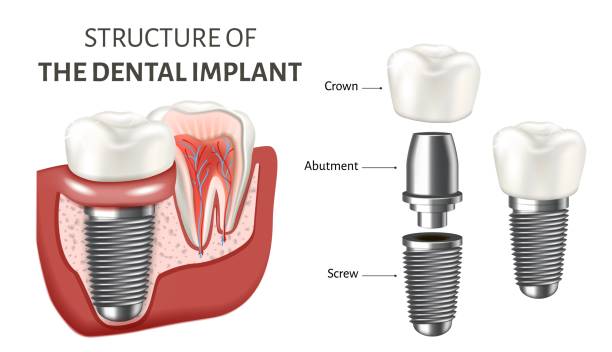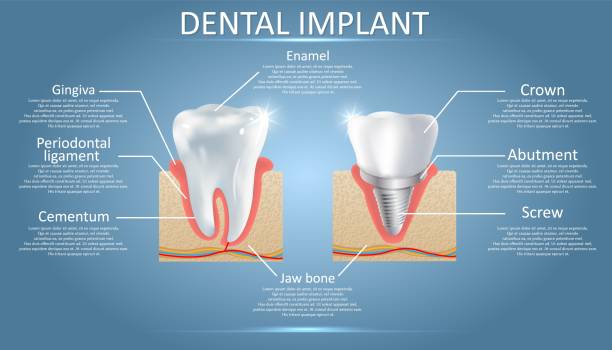Over the past two decades, dentistry implants happen to be continually increasing. The technology and science for dental care implants now help make implants as expected and reliable as increasing numbers of classic oral restorative processes like crowns and bridges.

Two specific steps do implants. A titanium artificial tooth root is surgically placed into the jaw bone by an oral surgeon, periodontist, or general dentist with specialized training. The top of the implant is just below the level of gum tissue and exposed to the inside of the mouth by leaving a small hole in the gums. A “healing cap” is screwed into the threads of the implant to prevent the gum tissue from growing over or into the implant.
Stability Period
A period of six or seven weeks to several months is essential to the titanium implant to “integrate” using the jaw bone fragments. That means that the bone attaches to the implant to provide stability. It should be realized that this attachment is NOT the same as with a natural tooth.

Multiple missing teeth
There is no periodontal ligament involved, which is the feature in the bone to tooth attachment that allows for tooth movement through bone. Implants cannot be moved orthodontically nor be exposed to forces that cause natural teeth to move in response. For this reason, if implants are being considered with multiple missing teeth, your dentist must plan the number of implants and type of restoration placed on the implants carefully.
Single tooth missing
The sort of renovation added to the implant are assorted. In the case of a single tooth, a piece called an abutment. The abutment is screwed into the implant to replace the healing cap. Now, the osseointegration of the implant has been accomplished. A crown (or cap) is then cemented over the abutment, just as if this were a natural tooth that had been prepared for ahead.

Cost effective
There can be several one teeth implants put either next to one another or in different locations throughout the mouth where pearly whites are lacking. However, when the span of missing teeth is too high, it becomes more cost-effective as well as biologically supportable to place two or three implants and link them together with a fixed bridge. There will be more teeth showing on the deck than implants, just like traditional bridges on natural teeth. These are also supported be abutments screwed into the implants as with single tooth implants.
Fixed denture
When there are lots of absent teeth (or them all), implants are generally used to help a detachable denture. In these cases, several implants are linked together with a cast metal bar screwed into the implants on short posts. On the underside of the denture, clips are inserted, which clip onto the bar between the implants.

A denture made this way is vastly more comfortable than a traditional denture because it largely rests on the bar instead of the tissue, thus eliminating many of the sore spots of dentures. Additionally, the denture is locked into place by the clips and is extremely stable, unlike dentures that tend to slip and shift or come entirely out much more quickly.
Although implants can be costly by comparison with other, more conventional dental care prosthetics, the possible rewards make them equally valuable. Most patients who have had traditional dental prosthetics replaced by implant-supported prosthetics are so happy that they would never go back.


